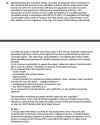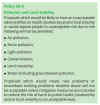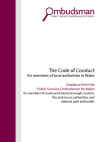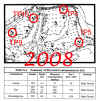|
Neath Port Talbot Council Contaminated Land Strategy October
2005 - CLICK
HERE
EXTRACTS FROM THIS DOCUMENT
(page 1) Part IIA of the Environment Protection Act 1990, was introduced in Wales on July 1st 2001, until this time there had been no strategic approach to the identification of contaminated land. Land contamination had always been addressed during redevelopment or when the risk has manifested itself. Since 2001, all local authorities have a duty to inspect their areas, locate and ensure the remediation of all statutory designated contaminated land.
One of the key objectives of the council's strategy (Key
Objective 4:) is to ensure that during the redevelopment of new sites, land contamination issues are dealt with effectively and at an early stage of the planning process.
(page 15) Chapter 3: Strategy Aims, Priorities and Timescales
3.2 Interaction with other regimes
In addition to powers under Part IIA, Environmental Protection Act 1990 there are a number of other statutory regimes that can deal with contamination dependant upon the source of contamination and the current, proposed or historical use of the land. Neath Port Talbot Council will ensure that land contamination is dealt with under the most appropriate legislation. The other statutory regimes are summarised below:-
Planning
When considering development proposals, the planning authorities role is to ensure that all material planning considerations, which can include the actual or possible presence of contamination are satisfactorily addressed. When considering an application, where contaminated land is
involved the planning authority will identify specific measures to be undertaken prior to redevelopment, these requirements will be imposed by a set of conditions attached to the planning permission. The main objective of the conditions is to ensure suitable investigation work is carried out and that the land is remediated to a standard that is suitable for the proposed end use.
(page 26) 5.11 To establish whether identified contaminants pose a significant risk to human health, results from the site investigation will be compared with generic guideline values.
DEFRA and EA have published Contaminated Land Reports
(CLR 7 – 11) to provide generic assessment of human health risks from contaminated land. The reports include SGV’s (Soil guideline Values) derived from the CLEA (Contaminated Land Exposure Assessment) model. SGV’s can be used to assess the risks posed to human health from exposure to soil contamination resulting from land use. They represent ‘intervention values’ which indicate to an assessor that soil concentrations above this level could pose an unacceptable risk to the health of site users and further investigation involving and/or remediation is required.
Part IIA of the Environment Protection Act 1990, inserted by Section 57 of the Environment Act 1995 places a duty on Local Authorities to inspect their area for contaminated land.
(page 3) Section 78A(2) defines contaminated land for the purpose of Part IIA as:
“Any land which appears to the local authority in whose area it is situated to be in such a condition, by reason of substances in, on or under the land, that –
(a) significant harm is being caused or there is a significant possibility of such harm being caused;
The local authority is the principle regulator and is responsible for: -
Preparing and publishing inspection strategies for their areas, within 15 months of the date of implementation
Inspecting individual areas of land to determine whether any meet the statutory definition of contaminated land
Agreeing with the environment agency which areas of Contaminated Land should be designated as “special sites”
Enforcing remediation for those areas of Contaminated Land that are not designated as “Special Sites” and,
Maintaining public remediation registers
(page 14) It is commonly accepted that humans are the most sensitive environmental receptors, therefore in the highly populated urban areas where heavy industrial activity has taken place, the people who live and work here are considered to be the Borough's most sensitive risk group.
(page 4) Contaminated Land and The Planning Process
The objective of the policy regarding land contamination is to ensure that applications are conditioned to require remediation to a standard that is suitable for the proposed use.
The best way of minimising any associated risk is to ensure that any sites that may be contaminated are identified at the earliest stage of the planning process. The history of the site or nearby sites is the principle factor in determining whether a site is likely to be contaminated or not.
1.3 A question has been added onto the standard planning application form requesting developers to provide information on historical land use. This question is as follows:-
Are you aware if land has been subject to a contaminative use i.e. industrial use?
If yes then please specify a list of historical uses.
1.4 A list of planning applications is updated weekly and made available on the Neath Port Talbot Council intranet site, the Contaminated Land Officer will check the list against the contaminated land database to highlight any previous industrial use on the proposed developments, and therefore potentially contaminated land.
Where the information under 1.3/1.4 or any other information indicates a potential for contamination a scheme for dealing with contamination will be required and an assessment will be made as to whether the site can be developed in a safe manner subject to remediation. If this is the case, a condition will be imposed on any consent which will include an appropriate site investigation prior to the commencement of the development, and a remediation strategy and validation certificate prior to occupation of development. This will involve close liaison between the Contaminated Land Officer and the planning officer at an early stage of the planning process and throughout the development stage.
Under Part IIA the Environment Agency has a mainly supporting role, providing assistance and site specific guidance to local authorities, particularly with respect to cases of water pollution. The Agency acts as the enforcing authority for “special sites”. |
























